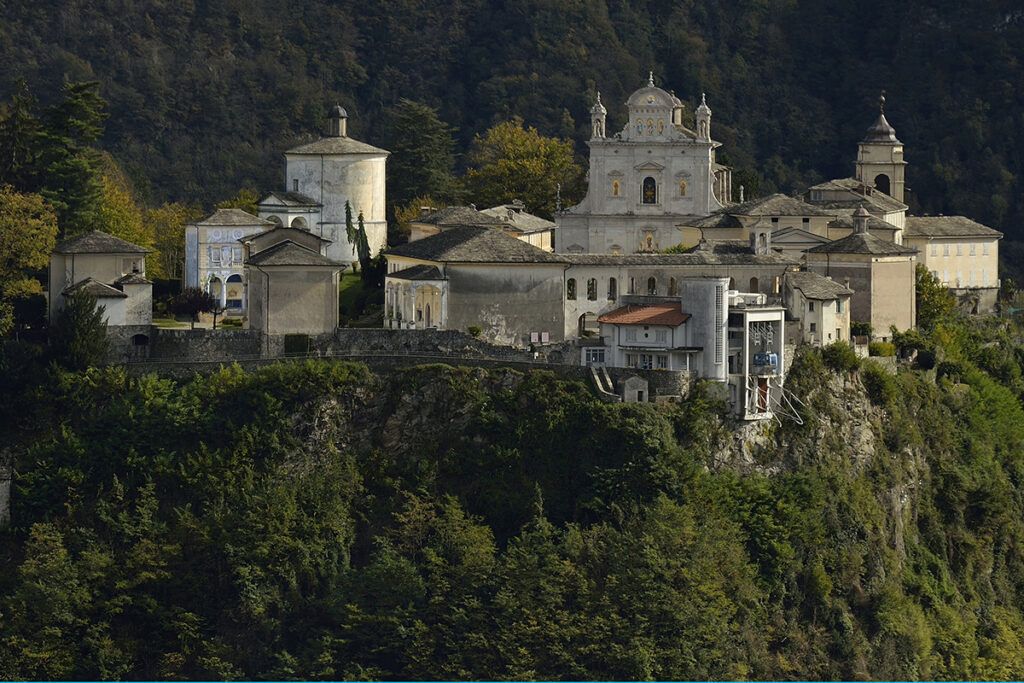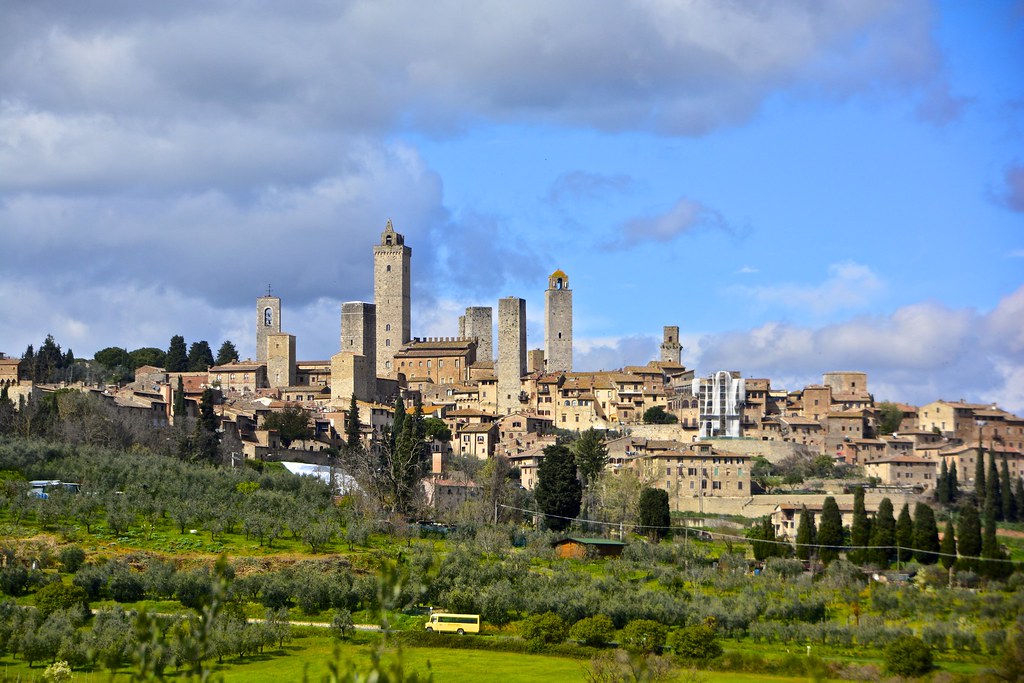The most famous material and immaterial heritage near the locations of Laqua Collection in Italy
Italy is rich in places, landscapes and traditions that have become part of UNESCO tangible and intangible World Heritage . Our nation boasts indeed the largest heritage in the world, with as many as 59 sites and 15 intangible cultural heritages.
If you are planning your stay at Laqua Collection in Piedmont, Tuscany or Campania, read on to learn more about 3 itineraries to discover the most evocative UNESCO sites just a few steps from our homes.

Spirituality, art, and flavor: the Holy Mountains and the truffle hunting in Piedmont
On the shores of Lake Orta and a stone’s throw from Laqua by the Lake, Orta San Giulio holds a jewel that perfectly combines spirituality, art and culture.
Set in an evocative natural landscape, with breathtaking views of the lake, the twenty chapels of which it is composed house 17th century frescoes and life-size terracotta sculptures that bear witness to the life of St. Francis, and it was precisely such architectural and artistic richness, together with the marvelous surrounding landscape in which it is located, that made this place one of UNESCO World Heritage Sites in 2003..
The monumental complex draws inspiration from the oldest of the nine Holy Mountains (Sacri Monti), that of Varallo Sesia, 30 minutes away from Lake Orta. Nestled among rocky peaks and green forests, it offers picturesque views of Valsesia and the entire town in the Vercelli area.
The Sacro Monte of Varallo consists of forty-four chapels and an imposing Renaissance basilica located on a scenic plateau between the city and the mountains of Valsesia.
It was built as a centre of spirituality for worshippers and pilgrims starting from the end of the 15th century, and was enriched over the course of two centuries with more than 400 sculptures and 4000 frescoed figures representing the places of Christianity.
Not only beautiful places among our Italian UNESCO World Heritage Sites, but also centuries-old traditions and practices: this is the case of truffle hunting, a true art that belongs to several regions of our country, such as the Monferrato, Roero and Langhe areas in Piedmont.
Here we celebrate the deep knowledge of the territory and the natural environment of truffle hunters, custodians of a precious knowledge that deserves to be handed down. A symbiosis between a product of the earth, man and animal, the latter represented by the dog, faithful companion in the search for the so-called ‘gold of the woods’.
You can enrich your stay at Laqua by the Lake with hikes and guided tours of the Sacri Monti or the not-to-be-missed truffle hunting in the Langhe, for an immersive experience amidst woods and good food.
PLAN A STAY AMIDST ART AND CULTURE

Medieval and Renaissance in Tuscany: Pisa and San Gimignano
AlsoTuscany is rich in priceless cultural treasures, now part of the UNESCO World Heritage for decades. First among them is Piazza del Duomo in Pisa, which you can reach from our Laqua Vineyard home in less than an hour. It boasts an incredibly vast cultural and artistic history, beginning in 1063 with the construction of the Cathedral of Santa Maria Assunta.
This was a golden period for the city, which was at the time one of the four Maritime Republics, and wished to celebrate its victory over the Arabs with a monument of immense splendour. A Pisan Romanesque architectural masterpiece, which over the centuries was joined by the Baptistery, the Leaning Tower and the Camposanto, to create a monumental complex defined by poet Gabriele d’Annunzio as the ‘Field of Miracles’ (Campo dei Miracoli).
Another jewel in the list of UNESCO World Heritage Sites in the heart of Tuscany is the historic centre of San Gimignano, a town in the province of Siena surrounded by thousand-year-old walls and reachable from Laqua Vineyard in just 45 minutes.
Its streets are dotted with medieval buildings and towers, making it an exquisitely evocative village, also thanks to the picturesque landscapes of Val d’Elsa that surround it. Not to be missed for their artistic richness are the Cathedral of San Gimignano, the Civic Museums and the Rocca di Montestaffoli. Saffron is the typical and renowned local product, a delicious souvenir to take away after visiting this Italian wonder.
PLAN A STAY AMIDST ART AND CULTURE

Natural beauty and centuries-old traditions: the UNESCO Heritage Sites of Campania
When man’s actions respect the surrounding Nature, celebrating it and adapting to its peculiarities without ever overpowering it, it happens that some cultural landscapes deserve to be among UNESCO’s World Heritage Sites.
This is the case of the wonderful Amalfi Coast, located between the Gulf of Naples and the Gulf of Salerno, east of the Sorrento Peninsula. A must-see destination during your stay at Laqua Countryside and Laqua by the Sea, with its typical vine and citrus terraces overlooking the sea, pastel-coloured houses and Mediterranean vegetation reflected in the blue. A breathtaking itinerary to fully enjoy such scenic splendour is the Sentiero degli Dèi (Path of the Gods), an excursion that will take you from Positano to the Lattari Mountains, all the way to Agerola.
And how not to mention the UNESCO site par excellence in Campania, the historic centre of Naples, which thrives on centuries-old traditions, scents and flavours that perhaps more than any other represent our nation abroad.
Every corner of the city has its own history and well-defined face, from the famous Quartieri Spagnoli to Vomero, from Montecalvario to Via Chiaia. Art, history and customs mingle among the streets, making it a precious treasure chest of Italian culture.
Imposing monuments, such as the Royal Palace, the Basilica of San Francesco di Paola and the Maschio Angioino, are not the only ones that bear witness to the city’s past; arts and crafts are also handed down from generation to generation, they still do not die out nowadays, and indeed make the city recognizable and iconic all over the world.
Just think that the art of Neapolitan pizza makers became part of UNESCO intangible heritage in 2017. Their knowledge includes practices and secrets that have been handed down for over a century, and which originated with Chef Raffaele Esposito.
The story goes that in 1889 he invented pizza to honor Queen Margherita of Savoy. Its ingredients are symbolic of the Italian flag, thanks to the red of tomatoes, the white of mozzarella and the green of basil.
This traditional dish is famous and loved all over the world, making Neapolitan pizza makers repositories of invaluable knowledge. And this includes not only the long process of preparing the dough, but also movements and gestures that are difficult to emulate.
PLAN A STAY AMIDST ART AND CULTURE

Gastronomic excellence worldwide: the Mediterranean diet and Italian cuisine
If we talk about UNESCO World Heritage Sites involving Italy in terms of food, we cannot fail to mention the Mediterranean diet. A cooking and eating model that shows no signs of disappearing, but stands firmly in the course of time.
Cereals, meat, dairy products, fruit, vegetables, olive oil, fish, wine and many others are the healthy and genuine products that make it up, and they are all linked to the breeding and farming practices typical of the Mediterranean areas, from Spain to Greece, passing through Italy.
This type of diet celebrates a balanced lifestyle, representing the importance of the land and biodiversity, capable of giving us varied and high-quality ingredients.
Another pride, this time purely national, is the nomination of Italian cuisine among the Intangible Cultural Heritage of Humanity. The excellence of Italian raw materials and age-old tradition of recipes and preparations place us among the best in the world, and Chef Cannavacciuolo’s cuisine in our Laqua Collection homes is committed to carrying the country’s culinary value high through gourmet dishes gourmet dishes that celebrate those extraordinary and genuine ingredients that have made Italy the culinary destination par excellence.


